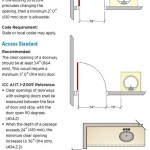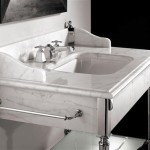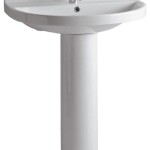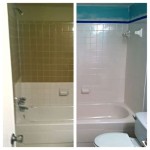Can You Replace the Drain in a Bathroom Sink?
Replacing a bathroom sink drain is a common plumbing task that many homeowners can tackle themselves. It involves removing the old drain assembly and installing a new one, and while it can be a straightforward process, it does require some basic plumbing knowledge and tools. This article will guide you through the steps involved in replacing a bathroom sink drain, providing insights into the necessary tools, materials, and considerations for a successful installation.
Understanding the Bathroom Sink Drain Assembly
A bathroom sink drain assembly consists of several components that work together to allow water to flow down the drain and prevent clogs. The main components include:
- Drain Body: The primary part of the drain that connects to the sink's drain opening and extends down to the drainpipe.
- Tailpiece: A short pipe that connects the drain body to the drainpipe. It allows for flexibility in adjusting the drainpipe connection.
- Stopper: A mechanism that prevents water from draining from the sink. This can be a pop-up stopper, a push-up stopper, or a traditional lift-and-turn stopper.
- Overflow Tube: A small tube that runs from the sink's overflow opening to the drain body. It allows excess water to drain away, preventing the sink from overflowing.
- Drainpipe: The pipe that carries the wastewater away from the sink.
When replacing the drain assembly, it is important to choose a replacement that is compatible with your existing sink and drainpipe. It's helpful to note the size and type of your current drain assembly before purchasing a new one.
Steps to Replace a Bathroom Sink Drain
Replacing a bathroom sink drain involves several steps that require careful attention to detail:
1. Turn Off the Water Supply
The first step in any plumbing project is to shut off the water supply to the sink. Locate the shut-off valve for the sink, usually under the sink or on the wall behind it. Turn the valve clockwise to fully close the water supply.
2. Disconnect the Drain Assembly
Once the water supply is off, you can begin disconnecting the drain assembly. This usually involves unscrewing the drain body from the sink's drain opening and disassembling the stopper and tailpiece. It's essential to note the order of the components and any washers or seals to ensure correct reassembly.
3. Remove the Old Drain Assembly
With the drain assembly disconnected, carefully remove the old drain assembly from the sink. If the drain body is stuck, try using a wrench or pliers to loosen it. Be careful not to damage the sink while removing the assembly.
4. Prepare the New Drain Assembly
Before installing the new drain assembly, inspect its components. Ensure all parts are present, and the drain body is the correct size for your sink. If necessary, apply thread sealant tape or plumber’s putty to the threads of the drain body to prevent leaks.
5. Install the New Drain Assembly
Install the new drain assembly in reverse order of removal. Start by attaching the drain body to the sink's drain opening and tightening it securely. Then, connect the tailpiece to the drain body and ensure it is properly aligned with the drainpipe. Reattach the stopper mechanism, paying attention to its placement and ensuring it operates smoothly.
6. Connect to the Drainpipe
Finally, connect the tailpiece to the drainpipe. This may involve using a pipe wrench or a slip-joint pliers to secure the connection. Once the tailpiece is securely connected, check for any leaks.
Tips for a Successful Installation
Here are some tips to ensure a successful bathroom sink drain replacement:
- Clean the Area: Before starting the replacement, clean the area around the sink to avoid dropping debris into the drainpipe.
- Use the Right Tools: Having the right tools on hand is essential for a smooth installation. This may include wrenches, pliers, a utility knife, and a screwdriver.
- Check for Leaks: After installing the new drain assembly, turn the water supply back on and carefully check for leaks around the drain body, tailpiece, and stopper mechanism. Tighten any loose connections to prevent leaks.
- Be Patient: Replacing a bathroom sink drain can be a time-consuming process, so be patient and take your time to ensure everything is properly installed.
If you encounter any difficulties or are unsure about any aspect of the installation process, it is always best to consult a professional plumber for assistance. They have the expertise and tools to safely and efficiently complete the job.

How To Replace A Drain In The Bathroom Sink Right Way

How To Replace A Bathroom Sink Drain Assembly
Install A Drain Stopper So The Is Removable

Bathroom Sink Popup And Stopper Problems
How To Install Bathroom Sink Drain Queen Bee Of Honey Dos

Bianchina Swapping Out A Bathroom Sink Drain And Pop Up

How To Replace A Pop Up Sink Drain Install The New Handymanhowto In 2024 Bathroom
How To Install Bathroom Sink Drain Queen Bee Of Honey Dos

How To Replace A Bathroom Sink Drain Assembly

How To Replace A Pop Up Sink Drain Remove The Old Bathroom Stopper Repair







